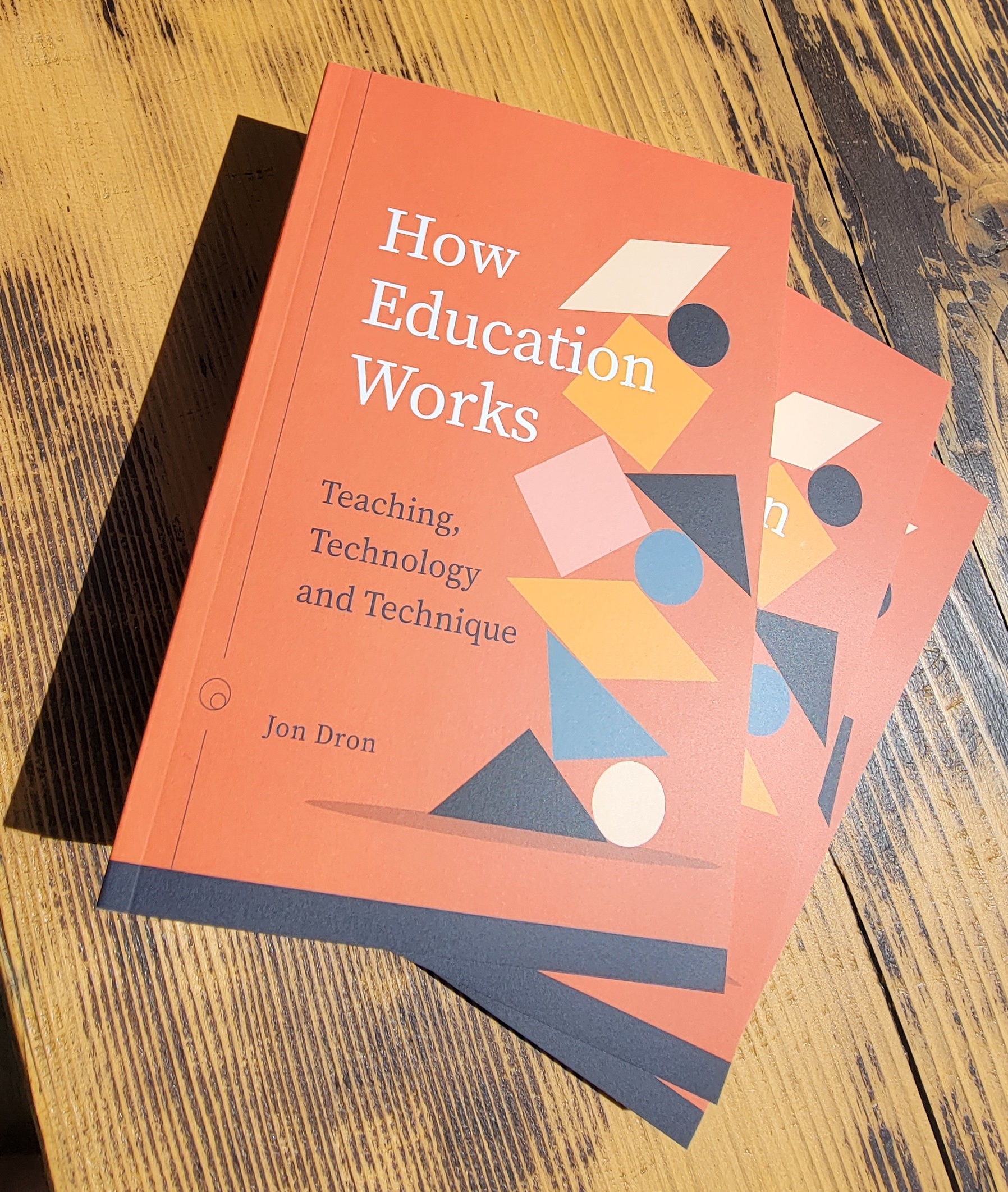My book has been set to music!
Many thanks to Terry Greene for converting How Education Works into the second in his inspired series of podcasts, EZ Learning – Audio Books with Beats. There’s a total of 15 episodes that can be listened to online, subscribed to with your preferred podcast app, or downloaded for later listening, read by a computer-generated voice and accompanied by some cool, soothing beats.
Terry chose a deep North American voice for the reader and Eaters In Coffeeshops Mix 1 by Eaters to accompany my book. I reckon it works really well. It’s bizarre, at first – the soothing robotic voice introduces weird pauses, mispronunciations, and curious emphases, and there are occasional voice parts in the music that can be slightly distracting – but you soon get used to it if you relax into the rhythm, and it leads to the odd serendipitous emphasis that enhances rather than detracts from the text. Oddly, in some ways it almost feels more human as a result. Though it can be a bit disconcerting at times and there’s a fair chance of being lulled to sleep by the gentle rhythm, I have a hunch that the addition of music might make it easier to remember passages from it, for reasons discussed in a paper I wrote with Rory McGreal, VIve Kumar, and Jennifer Davies a year or so ago.
I have been slowly and painfully working on a manually performed audiobook of How Education Works but it is taking much longer than expected thanks to living on the flight path of a surprising number of float planes, being in a city built on a rain forest with a noisy gutter outside my window, having two very vocal cats, and so on, not to mention not having a lot of free time to work on it, so I am very pleased that Terry has done this. I won’t stop working on the human-read version – I think this fills a different and very complementary niche – but it’s great to have something to point people towards when they ask for an audio version.
The first season of Audio Books with Beats, appearing in the feed after the podcasts for my book chapters, was another AU Press book, Terry Anderson’s Theory and Practice of Online Learning which is also well worth a listen – those chapters follow directly from mine in the list of episodes. I hope and expect there will be more seasons to come so, if you are reading this some time after it was posted, you may need to scroll down through other podcasts until you reach the How Education Works. In case it’s hard to find, here’s a list of direct links to the episodes.
Acknowledgements, Prologue, introduction
Chapter 1: A Handful of Anecdotes About Elephants
Chapter 2: A Handful of Observations About Elephants
Chapter 3: Organizing Stuff to Do Stuff
Chapter 4: How Technologies Work
Chapter 5: Participation and Technique
Part II: Education as a Technological System
Chapter 6: A Co-Participation Model of Teaching
Chapter 7: Theories of Teaching
Chapter 8: Technique, Expertise, and Literacy
Part III: Applying the Co-Participation Model
Chapter 9: Revealing Elephants
Chapter 10: How Education Works
Originally posted at: https://landing.athabascau.ca/bookmarks/view/20936998/%E2%96%B6-how-education-works-the-audio-book-now-with-beats





